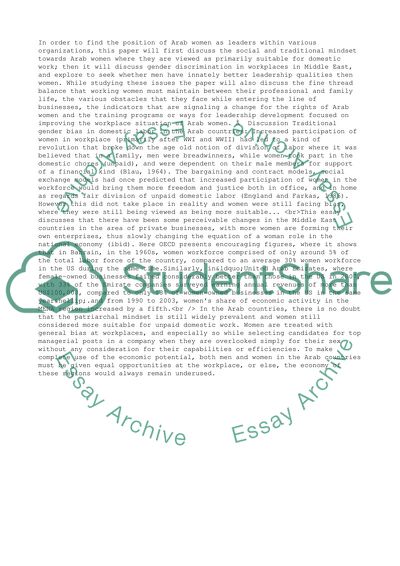Cite this document
(“Arabic Women in Leadership Term Paper Example | Topics and Well Written Essays - 2750 words”, n.d.)
Retrieved de https://studentshare.org/management/1392311-arabic-women-in-leadership
Retrieved de https://studentshare.org/management/1392311-arabic-women-in-leadership
(Arabic Women in Leadership Term Paper Example | Topics and Well Written Essays - 2750 Words)
https://studentshare.org/management/1392311-arabic-women-in-leadership.
https://studentshare.org/management/1392311-arabic-women-in-leadership.
“Arabic Women in Leadership Term Paper Example | Topics and Well Written Essays - 2750 Words”, n.d. https://studentshare.org/management/1392311-arabic-women-in-leadership.


